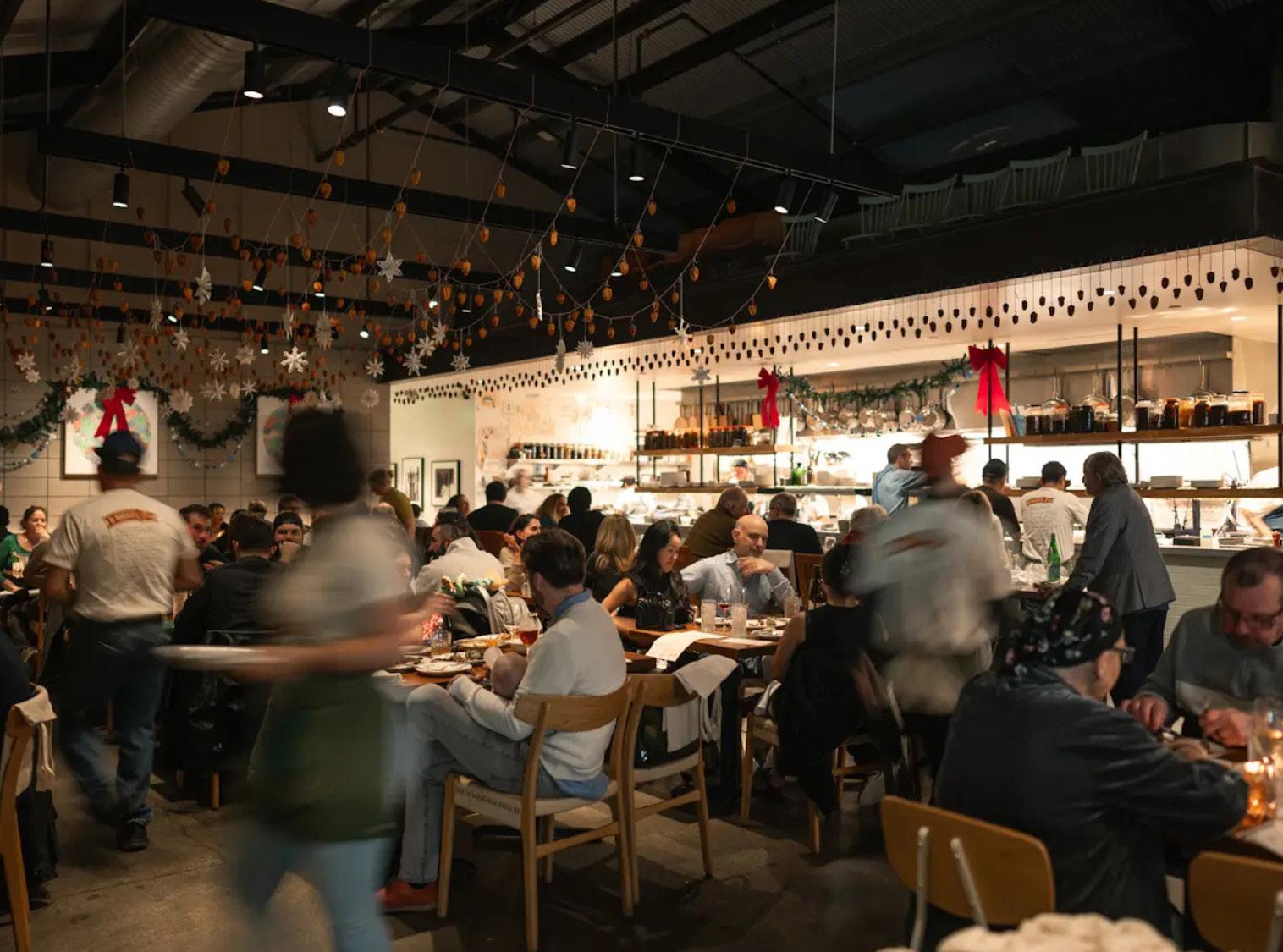




DART team discovers coils of copper wire and an array of burglary tools after observing
Santa Monica police arrested a man Nov. 4 after officers said they saw narcotics activity in the 400 block of Colorado Avenue and discovered stolen copper wiring and burglary tools.
According to the Santa Monica Police Department, officers with the Directed Action Response Team approached the suspect and recovered several coils of stolen copper wire, as well as bolt cutters, screwdrivers, wrenches, a pry bar and other tools commonly used in burglaries.
The suspect was taken into custody on suspicion of possessing stolen property, possessing burglary tools and narcoticsrelated offenses.
Police said the department continues conducting proactive patrols to deter theft, support local businesses and maintain public safety.

Detectives with the LAPD Juvenile Division’s Stuart House Unit said 37-yearold David Josue Lopes, also known as David Lopez, was arrested Nov. 6 in the Westlake area after investigators identified him as the suspect in the abduction and assault of a minor girl. Lopes was taken into custody and booked on suspicion of sexual assault.
Prosecutors have since charged Lopes, of Los Angeles, with one felony count of forcible lewd act upon a child under 14, along with special allegations of aggravated kidnapping and inflicting bodily harm on a child. According to the Los Angeles County District Attorney’s Office, Lopes is accused of approaching the victim inside a Hollywood restaurant on the evening of Nov. 5, escorting
her to a secluded area and sexually and physically assaulting her.
Lopes pleaded not guilty at a Nov. 10 arraignment and is being held without bail.
A preliminary hearing setting is scheduled for Dec. 12 in Department 33 of the Foltz Criminal Justice Center. If convicted on all charges, he faces life in prison without the possibility of parole.
Investigators believe additional victims may exist due to the severity and circumstances of the alleged assault. To help identify other possible survivors, police released a photograph of Lopes and urged anyone with information to come forward. The case is being prosecuted by Deputy District Attorney Jeff Megee of the Sex Crimes Division Stuart House and remains under active investigation.
Members of the public can contact LAPD Juvenile Division-Stuart House detectives at 424-259-7096. During evenings or weekends, tips may be directed to 1-877-LAPD-24-7. Anonymous information can be submitted through LA Regional Crime Stoppers at 1-800-222-TIPS, at www.lacrimestoppers. org, or through the P3 Tips mobile app.

SMPD, the USC & Annenberg Community Beach House and The Pierside Hotel took home trophies from the Halloweenthemed event
A Halloween-themed beach volleyball tournament in Santa Monica raised $1,940 for local nonprofits combating food insecurity, with organizers matching the amount to bring the total donation to $3,880, officials announced.
The fourth annual Volley-Ween event, held Oct. 29 at Perry’s Café and Beach Rentals on Santa Monica State Beach, was organized by Santa MoniCARES, the
charitable arm of Santa Monica Travel & Tourism.
“We are grateful to stand with the passionate and community-oriented organizations, businesses and residents of Santa Monica each Volley-Ween and all year round,” said Misti Kerns, president and CEO of Santa Monica Travel & Tourism, in a release.
The Santa Monica Police Department won the tournament, while the USC & Annenberg Community Beach House team took home the Spirit Award and The Pierside Hotel earned Best Group Costume.
Nathan Nguyen of the winning police department team called it “a great event” and encouraged more people to participate next year.
Professional beach volleyball legend Sinjin Smith made a special guest appearance.
All proceeds from the event support Santa Monica nonprofits serving residents facing food insecurity during the winter season.

The motion references the 2018 Camp Fire in Paradise, where fallen poles and wires blocked escape routes and contributed to dozens of deaths
The Los Angeles County Board of Supervisors voted unanimously Tuesday to begin formal proceedings with the California Public Utilities Commission aimed at compelling telecommunications companies to underground their lines in the unincorporated Santa Monica Mountains, citing delays that have stalled wildfiresafety projects.
Supervisor Lindsey P. Horvath, whose district includes the area, authored the motion, which directs the county’s Public Works Department and County Counsel to file a complaint with the CPUC if necessary. The action targets telecom providers that share utility poles with Southern California Edison but have refused to move their equipment underground even after Edison removes its own lines.
Edison has already completed undergrounding in the Las Flores/Rambla

Pacifico area and is on schedule to finish projects along Topanga Canyon Boulevard and Pacific Coast Highway by year’s end. Leftover poles with telecom wires remain standing, creating fire hazards and potential road blockages in communities with limited evacuation routes.
“Fire season is here now, and our residents cannot wait for safer infrastructure,” Horvath said after the vote.
The motion references the 2018
Camp Fire in Paradise, where fallen poles and wires blocked escape routes and contributed to dozens of deaths. A subsequent CPUC complaint filed by the Town of Paradise eventually forced coordinated undergrounding by all utilities.
County officials say repeated construction in narrow mountain canyons, such as Topanga, would be minimized if telecoms bury their lines at the same time Edison does the work.























































































The broader $60 million effort includes investments for street improvements, safety measures and business support
Crews have begun planting 37 large African fern pine trees and pruning historic ficus trees throughout downtown Santa Monica as part of a sweeping $60 million revitalization effort, city officials said.
The work, which also includes regular power washing of the city’s five downtown parking structures, is the first visible phase of the two-year Downtown Realignment Plan approved by the City Council last month.
Workers this week installed 36-inch box African fern pines — significantly larger than standard street trees — to create an immediate visual impact along Third Street Promenade and surrounding blocks.
“These beautiful new trees will make an immediate impact and will help shape the streetscape for generations to come,” the city’s Public Landscape Division said in a social media post.
The African fern pine was selected for its suitability as an urban tree and longterm durability.
In addition to the new plantings, crews are pruning decades-old ficus trees along six downtown blocks to improve canopy health and pedestrian clearance.
The broader Realignment Plan includes $60 million in investments for street improvements, enhanced safety measures and business support aimed at restoring downtown Santa Monica.
City officials described the ongoing work as a “glow up” for the popular shopping and dining district.



Birdie G’s will close out its signature chef-collaboration series this winter, announcing the final installment of 8 Nights at Birdie G’s for a December run featuring guest chefs from around the country. The event, presented by Resy, will take place December 1–4 and Dec. 8–11 at the Santa Monica restaurant led by James Beard Award–nominated chef Jeremy Fox.
The dinner series, known for pairing celebrated chefs with the Birdie G’s team for one-night-only menus, has become a winter staple since its launch. Organizers said the 2025 edition marks “the final chapter” of the program, which was designed to highlight creativity, collaboration, and regional cooking styles in a family-style format.
Early reservations opened to Global Dining Access by Resy members, with public booking beginning November 21. Each of the eight nights will feature a distinct collaboration, drawing on culinary backgrounds that span Michelinrecognized restaurants, award-winning bakeries, and innovative regional kitchens. You can purchase tickets here.
The series is sponsored by the Fairmont Miramar Hotel & Bungalows, Acqua Panna, S.Pellegrino, G Waters X, and
Champagne Henriot.
Dec. 1 — Sean Gray & Elijah Deleon
Sean Gray, now executive chef of The Sergeantsville Inn in New Jersey, started his career across the Delaware River in Lambertville before moving to New York City. He later joined the two-Michelinstar restaurant Momofuku Ko, where he became one of the leading creative forces. His menu at the Inn blends nostalgic American tavern cooking with refined technique.
Elijah Deleon, executive chef of Rustic Canyon, returns to Birdie G’s after working his way up from sous chef. Born and raised in L.A.’s South Bay, Deleon draws on Filipino and Mexican influences in his ingredient-forward approach. Under his leadership, Rustic Canyon earned a spot on the LA Times 101 Best Restaurants list.
Dec. 2 — Trevor Moran & Justin Yu
Trevor Moran, executive chef of Locust in Nashville, previously led The Catbird Seat and is known for modern Irish and British cooking accented with seafood, sauces, and Japanese inspirations. Locust was named a Food & Wine Restaurant of the Yea,r and Moran is a James Beard semifinalist.
Justin Yu, chef-owner of Houston’s acclaimed Theodore Rex, is a Food & Wine Best New Chef and the 2016 James Beard Award winner for Best Chef: Southwest. His precise, seasonally driven cooking has earned a Michelin Bib Gourmand and national recognition.
Dec. 3 — Jeremiah Langhorne & Saw Naing
Jeremiah Langhorne, chef of The Dabney in Washington, D.C., brings a Mid-Atlantic perspective rooted in regional ingredients and open-hearth cooking. The Dabney holds a Michelin star.
Saw Naing, of Joplin’s in Ojai, is a
rising chef known for thoughtful, refined California cuisine guided by hyperseasonal sourcing.
Dec. 4 — Wylie Dufresne + Quarter Sheets (Aaron Lindell & Hannah Ziskin)
Wylie Dufresne, the pioneering chef behind New York’s wd~50, helped popularize modernist cooking in the U.S. His playful, science-driven approach now appears in his doughnuts (Du’s Donuts) and pizza venture, Stretch Pizza.
Joining him are Aaron Lindell and Hannah Ziskin of Quarter Sheets in Echo Park, a cult favorite praised for its pan pizzas and desserts. Ziskin was named a Food & Wine Best New Chef in 2023, and the restaurant has appeared on top lists from the New York Times and LA Times.
Dec. 8 — Alex Stupak & Jordan Kahn
Alex Stupak trained at Clio, Alinea, and wd~50 before shifting his focus to Mexican cuisine through his Empellón restaurants. He was named a Food &Wine Best New Chef and earned multiple James Beard nominations, including for his cookbook Tacos.
Jordan Kahn, a Los Angeles-based chef and multidisciplinary artist, leads Destroyer, Meteora, and the twoMichelin-star Vespertine. His work blends gastronomy, design, and livefire technique, with extensive Michelin recognition across his restaurants.
Dec. 9 — Beau Schooler + Katianna & John Hong
Beau Schooler, chef of In Bocca al Lupa in Juneau, is known for his inventive use of Alaskan ingredients. His restaurant was named one of the New York Times’ “50 Places in the U.S. We’re Most Excited About.” He’s a multiple-time James Beard semifinalist.
Katianna and John Hong, co-owners of Yangban in Los Angeles, return for their fourth appearance at the series. Katianna was the first female chef de cuisine at the three-Michelin-star Restaurant at Meadowood, and John trained at Alinea. Their Korean-American cooking at Yangban has earned national attention.
California—the first San Diego chef to earn the nomination.
Tracy Malechek-Ezekiel, chef-owner of Birdie’s in Austin, has earned Food & Wine’s 2023 Restaurant of the Year and a James Beard Finalist nod for Best Chef: Texas. Her contemporary, seasonal cooking often draws from Italian and French technique.


Dec. 10 — Chris Cosentino & Brad Mathews
Chris Cosentino, known for his advocacy of sustainable and nose-to-tail cooking, earned acclaim at restaurants including Incanto, Cockscomb, Acacia House, and Koast Maui. He is also a cookbook author and philanthropist.

Brad Mathews, chef of Bar Le Côte in Los Olivos, focuses on seafood-driven cuisine influenced by upstate New York roots and years in top L.A. kitchens. His savory caviar cheesecake was named an LA Times “Best Bite of 2024.”

Dec. 11 — Tracy Malechek-Ezekiel & Tara Monsod
Tara Monsod, executive chef of Animae and Le Coq in San Diego, infuses Filipino and Southeast Asian influences into hyper-seasonal menus. She is a twotime James Beard Finalist for Best Chef:
Professor Horst Rittel of UC Berkeley's School of Architecture coined the term "wicked problems" to describe planning challenges in constant flux with many moving parts and stakeholders. He taught that effective problem-solving requires defining the "solution space" by identifying as many parameters as possible. More parameters identified means a smaller solution space and more focused solutions.
However, state laws and political pressures, along with ideologically driven city council members, have resulted in significant height and density increases throughout our 8.4 square mile beachfront town. Where is the analysis that defined this need? Why is supporting data impossible to locate?
We know it's physically possible to build tall and dense. But the fact that we can doesn't mean we should. Without analysis showing demonstrated need, this isn't problem solving—it creates more problems and demonstrates that excesses result from poor planning.
The Density Dilemma
Why increase density? Unlike small beach communities such as Hermosa Beach, we are a major tourist destination. Where is the Planning Department's analysis showing need for increased residential population and marketrate housing? Why do state laws allow developers to circumvent local zoning codes?
California Department of Finance charts (https://dof.ca.gov/forecasting/ demographics/estimates/e-5-populationand-housing-estimates-for-cities-countiesand-the-state-2020-2025/) consistently show Santa Monica in the top ranks of the state's 400+cities for high residential vacancy rates—generally around 10%, currently 5,200+ vacancies. Where is the analysis indicating this isn't enough? While there's definitely a lack of truly affordable units, without subsidies, developers only provide 10-20% deed-restricted affordable housing, crushing our environment with unaffordable market-rate units.
Downtown's Decline
What remains downtown for residents? The Apple store, maybe. Otherwise, just national chains, vacant storefronts, a dead Santa Monica Place shopping center, and traffic 'calming' that has become a major stumbling block. Ironically, years ago, the California Chapter of the American Planning Association awarded Santa Monica accolades as a "Great Place in California," claiming downtown thrived because city planners recognized fifty years ago that lively pedestrian activity was key to maintaining a thriving shopping district. Perhaps the jurists didn't drive down from

Sacramento to look.
Fewer local mom-and-pop shops offer anything unique. There's no central plaza or park offering community activity, except possibly the winter ice rink—in jeopardy given the City Council's continued entertainment of massive projects on that site. For movies, it's easier to go to Marina del Rey, Westwood, or Playa Vista.
Not Family-Friendly
The city council continues advocating more downtown housing, but why? There's no elementary school downtown, and none proposed. Who is this housing aimed at? Singles? There's no apparent intent to attract established families. There is no public open space except streets, balconies, and rooftops—hardly conducive to family life, with no green space or open play areas within safe walking distance for small children.
Downtown, with its Times Square-style flashing billboards, is not kid or familyfriendly. Other than the fact that we can build tall, there's no documentation showing why we should.
Commercial Mansionization
In the 1980s, Santa Monica's singlefamily zoning code was rewritten to prevent "mansionization"—large homes on small lots built to maximum height without setbacks and facade articulation. All gone now with new state laws allowing splitting a single-family lot into up to ten lots, each with a unit plus ADUs. Truly incomprehensible, yet championed by our current city council majority, consistently favoring developers over residents. They have to go!
Recently approved and built mixeduse projects show little or no "front yard" setback (wider sidewalks) and no paseos between buildings or articulated facades allowing sun and air to reach passageways or occupants. Instead, we see boxes maximizing sites with repetitive breaks along front elevations, but little concern for side elevations blocking light and air. Lincoln Boulevard, especially north from the freeway, is the ugly poster child of wall-to-wall five-to-eight-story buildings—a testament to developer greed and enabling politicians. Why is the current administration, local and state, so intent on this non-sustainable path to change our
beachfront community into just another dense urban environment?
A Regional Resource
Santa Monica is a beach community that can, in a way, be likened to New York's Central Park. We are a natural resource of fresh, cool air and sun for the greater region. People come seeking relief from oppressive valley heat, downtown metro areas, and the east side. It's time to step away from the notion that Santa Monica is merely a developers' golden goose to be built out to the maximum. Can you imagine infilling Central Park with highrise "walkable" neighborhoods? New Yorkers wouldn't stand for it. Why do we?
While we continually hear from development proponents that it's all about affordable housing shortages, "affordable" is merely a buzzword for moving large-scale market-rate projects through approval with promises of token affordable units. Council members and planning commissioners seem willing to ignore negative impacts as long as a few units are called “affordable”. But its clear development is not about creating affordable housing because developers have just been exempted from providing ANY affordable housing units required for their developments until 4-5 years AFTER they get their market rate projects approved, and maybe never actually gets built. Meanwhile, developers profit, and residents' quality of life is diminished.
Conclusion
We have a responsibility we're not fulfilling: protecting our beachfront environment and the relief our low-rise beach town provides to the greater region. People come to enjoy our beaches, blue skies, and fresh ocean air—not to visit just another dense, congested, traffic-clogged metropolis.
As our land is already built out, increased density can only occur by building taller, contrary to positive environmental impacts of maintaining Santa Monica as a lowrise town. Increased development is like chopping down the rainforest, chipping away at the low-rise openness and bluesky beach town Santa Monica provides its residents and those seeking relief from

Immerse yourself in a sanctuary where nature’s tranquility meets the vibrancy of city life. Urban Jungle is more than a plant store it’s a communitycentered oasis bringing a lush slice of paradise to your urban lifestyle. Here, we passionately believe in the power of plants to transform spaces and elevate well-being.









By Kathryn Whitney Boole
This is a classic European-style film focusing on relationships, more intense and intimate than that style usually is, by Norwegian director Joachim Trier. It’s a cinematic tone poem about place, family bonds, and being alive. Nothing is spelled out in the narrative. It is presented as if it is a painting that you observe with your own personal meaning coming to the surface.
The visuals of cinematographer Kasper Tuxen are extraordinary, his camera following every detail of a room, a face, or a grand landscape. A house is the central figure, and every object and surface in its rooms has a role and conveys clearly the backdrop for the emotional exchanges taking place within its rooms.
This is not a unique idea, but here it’s a spectacular device, as this home has witnessed the intimate machinations of so many relationships within its walls that it harbors a sense of immortality. We never see as much of other people’s relationships as does a living space, whether it’s a cozy apartment, a duplex, a townhouse, a bungalow, or a mansion.
The way the camera moves over the “bones” of the house, the outer and inner structure, is almost sensual, and it draws us into the structure as a character with personality. Trier sent location scouts all over Oslo, and in the end, he realized the perfect house was two blocks from his own home – he apologized to the scouts for all their work.
Trier is a native of Oslo, the son of a sound technician and jazz musician. He loved the visuals of directors Antonioni and De Palma and realized that what he needed to learn was character. This film proves that he has mastered that. The acting from each of his stars here is brilliant. At the inperson panel after my screening, Stellan Skarsgård, Renate Rensve, Inga Lilleaas, and Elle Fanning all concurred that Trier creates such an environment of trust on set that they can summon the courage to dig deep into their most sensitive, hidden instincts.
It doesn’t matter that most of the dialogue is in Norwegian with subtitles because the actors convey the meaning of the words with their expressions and body language. Trier is known for working instinctively, without mood boards or storyboards, and there is some rehearsal, but never too much. Sentimental Value is about a father who is a film director and has been absent for much of his two daughters’ lives. He wants to make his final feature about them and must confront the idea that perhaps he doesn’t truly know them.
Rensve, who plays “Nora,” the older sister, is a Norwegian theatre actress who


had her film breakthrough in Trier’s The Worst Person in the World in 2021. She won Best Actress at Cannes for that film. The role of Nora was written with her in mind - a celebrated actress who has a paralyzing fear of walking onstage in front of an audience, which reflects her extreme vulnerability and her sense that she did not deserve love.
Lilleaas, as “Agnes,” is the least experienced of the cast. She is also a Norwegian theatre actress who received her BA in Arts & Acting. Trier saw many actors for the role, but when he saw Lilleaas audition, he recognized that she had star power.
Fanning, who plays a movie star brought in to portray “Nora” in the father’s film, perfectly embodies the innocence and bashful awareness of a young star just finding her footing in the world of fame.
Fanning has been acting since she was a toddler, when she played little sister to her real-life sister, Dakota, in I Am Sam. One of her first roles was in an Uncrustables commercial, and since then, she has appeared in 61 films and 21 television shows. In her role as “Catherine” in The Great, she proved that she can move adeptly between tragedy and comedy.
Skarsgaard, as the director/father, is perfect. Even though the actor suffered a stroke three years ago, which took his short-term memory, it did not rob him of his ability to adapt, so crucial to acting. Since he can no longer memorize lines, Skarsgaard uses an earpiece which feeds him his words. I did not know this when watching the film, and I never would have guessed from his performance. A reader speaks the lines in an earpiece in a neutral way while his scene partner is saying their lines, so he hears both at once and then speaks, keeping the rhythm of the scene.
That may actually be a more natural way to speak lines. Skarsgaard notes that the
Rated R 133 Minutes Released November 7th


stroke may have taken his ability to speak at length, but not his ability to act or the depth of understanding of his lines. His performance is thus a “teaching moment” for us actors. He describes this role as “a paradox of someone who can see people so clearly in his art yet be so clumsy and inept in his real life.”
The concept of the house as the pivotal character is not new. Our environment is something we take for granted from the beginning of our lives, and it affects us more than we realize. If you think back through your life to recall your most impactful moments, chances are many of them occur in a home that you will never forget, even if it’s no longer physically there. I have one of those installed in my memory, and I still wake up dreaming I am walking in its rooms and playing in its garden, and I can feel the wood batten walls and the old carpet, and sense the fresh breeze and warm rocks under the blueberry bushes.
Sentimental Value received a 19-minute standing ovation at this year’s Cannes Film Festival and is the official submission of Norway for the Best International Feature at the 98th Oscars.
Kathryn Whitney Boole has spent most of her life in the entertainment industry, which has been the backdrop for remarkable adventures with extraordinary people. She is a Talent Manager with Studio Talent Group in Santa Monica. kboole@gmail.com
Continue from page 6
heat and dense urban life. Building taller and denser, killing sunlight and fresh ocean breezes that currently define our town, would be no different from living in the Amazon and destroying the "lungs" of the entire region.
The design process requires defining a problem—a need—and then solving it. Where is the analysis that defined the need to increase our beach town's density? It seems clear that increased density is the problem, an imaginary need serving economic interests, with outcomes being increased traffic congestion, pollution, demand on city services, diminished livability, and burdened residents facing quality-of-life loss and higher costs.
Just say no to the mansionization of Santa Monica.
Bob Taylor, AIA For SMa.r.t.
Santa Monica Architects for a Responsible Tomorrow
Robert H. Taylor, Architect AIA; Dan Jansenson, Architect, (ex-Building & Fire-Life Safety Commissioner); Thane Roberts, Architect; Mario FondaBonardi, Architect AIA (ex-Planning Commissioner); Sam Tolkin, Architect, (ex-Planning Commissioner); Michael Jolly ARE-CRE; Jack Hillbrand AIA, Landmarks Commissioner Architect; Phil Brock (SM Mayor, ret.); Matt Hoefler, Architect NCARB; Heather Thomason, resident activist.
For previous articles, see www. santamonicaarch.wordpress.com/writing
